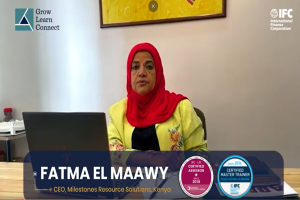Coloring Inside the Lines
Last month, we introduced the mistake-filled “T1 Training Company” and talked about the mistakes they made when assessing “Acme Company’s” training needs. This month we examine T1’s mistakes during the Design Curricula phase.
T1 had a standard day-long time management course that it cut to four hours, per Manager Fred’s request. Analysis of the end-of-course evaluations identified some common complaints. Participants felt the course:

- Was too basic
- Was too complex
- Felt disjointed
- Had too much content for the allotted time.
These common complaints trace their roots back to three common mistakes during the Design Curriculum phase, when training professionals plan the learning experience:
- Assuming a monolithic audience: One size fits all might be nice for scarves, but it is not helpful for training. Good instructional designers customize the content not only for the organization, but also for the target audience. Asking questions during the needs assessment about the target audience’s experience, issues, prior training, and educational levels can help you determine which content to keep and which to omit. This can help you avoid teaching tips they already know (too basic), or discussing at too advanced a level (too complex). Determine the performance gaps, then create training that addresses those gaps.
- Creating content extemporaneously: It is tempting to start writing a course and see where it goes, especially if you are already familiar with the topic. While this seems to be a more efficient approach, it is not. It can lead to courses that veer off-topic, as the writer goes further down one train of thought and forgets what the original point was. It can also cause more rework, especially if someone else is reviewing the course. Take the time to create a detailed course outline first, showing the course goals, topics, and sequence. Get input on the course flow and make changes when the document has only a few lines of text, rather than after you have invested time creating detailed paragraphs and images. In the end, you will have a more focused course that takes less time to create.
- Calculating timing at the end of the creation process: If you wait until you finish creating the course to determine the total needed time, you are likely to have more content than fits into the allotted time. A good outline helps you avoid the uncomfortable task of cutting content by identifying relevant activities and the duration for each discussion and activity before you invest effort in creating the material. It is easier to total the time for all items in an outline and then cut a single line than it is to create content and cut it at the end.
Once you have an approved outline, creating the actual course becomes much simpler. The hard work of thinking what to include and how to include it has already been done. Now it is just a matter of “coloring in the lines” with the details.
What other common mistakes do you think T1 made during the Design Curricula phase? Add your answers in the Comments section to keep this conversation going!





